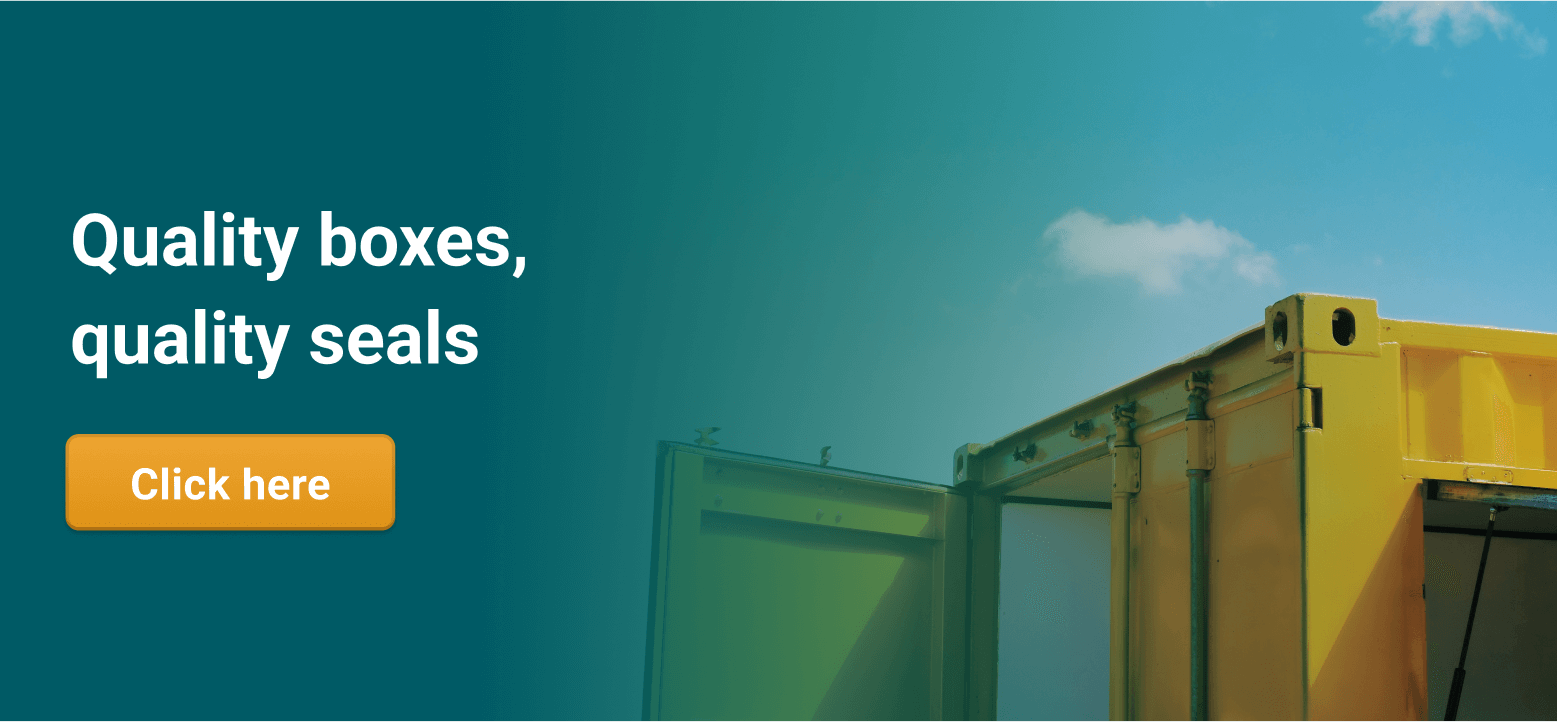If you have nightmares about stolen or damaged cargo, you need a good container seal. In this guide, we’ll run through the different container seal types, which ones are the safest, and how to make sure you fit them correctly to prevent theft and damage.
You receive your container at the port only to find out your goods have been tampered with or stolen. To make things worse, you have no proof, so you can’t claim from insurance. The solution? Picking a quality seal, which protects your goods and acts as proof of tampering.
At xChange, we connect you with a wide network of container traders, freight forwarders, and shippers. It’s quick and easy to find the perfect box for your shipping needs, from the comfort of your office. Our platform helps you compare prices, negotiate terms, and manage all paperwork in one place.
All of our partners have been vetted and pre-approved, so you no longer have to spend hours researching and background-checking companies. Just type in the container type you’re looking for, and the location to choose between 1000s of boxes in your area.
Find the right container for your shipping needs on xChange today. Try our public search below to get started searching for great deals on containers with lockboxes on our platform.
What is a container seal?
A container seal is a tag that secures the door lock of your box. They’re made to withstand harsh weather conditions and safeguard the container on its journey. Each seal has a unique identification number, and can only be broken once. After it’s been broken, it needs to be disposed of, as it can’t be used again.
There are many different types of container seal available. Choosing the right seal will depend on your container type, how long the route is, and what you’ll be shipping.
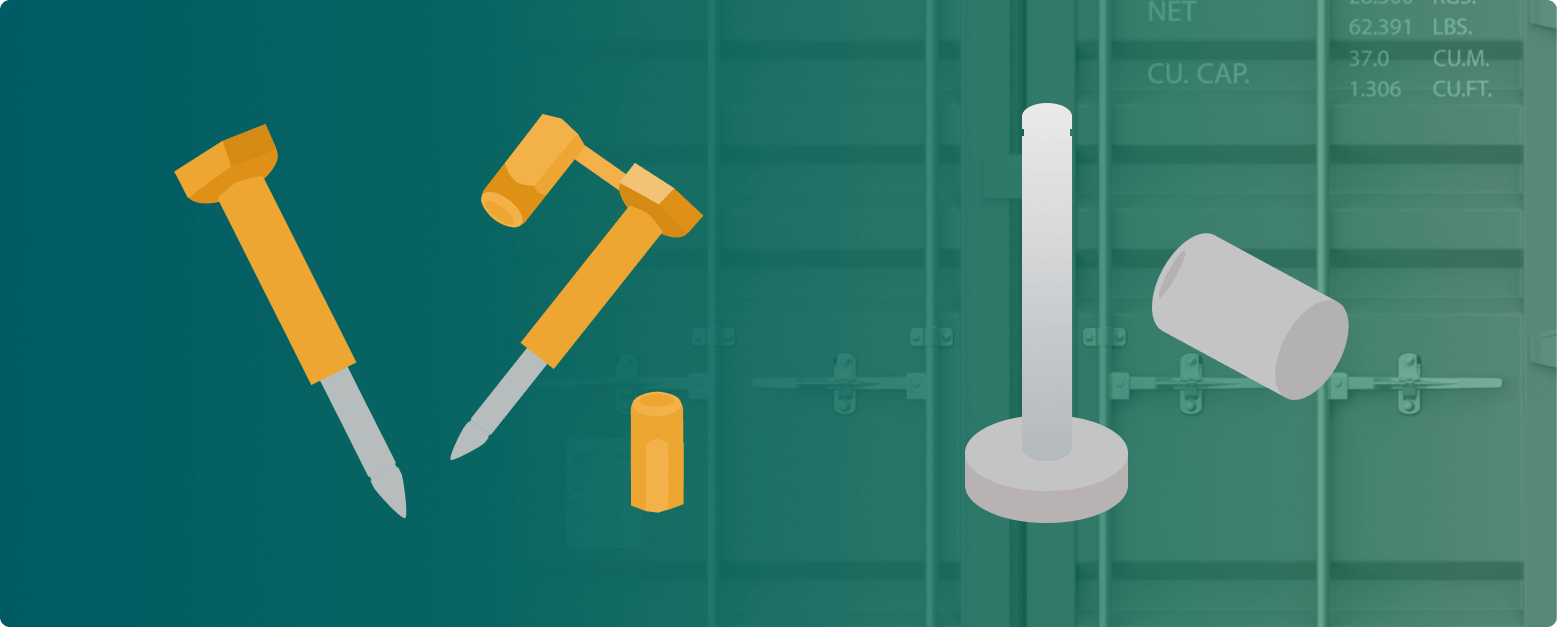
Why use a container seal?
Container seals keep your goods safe and secure inside. Not only this, but they also prevent criminals from planting contraband or illegal substances into your box, which can get you into a lot of trouble.
If your seal is broken upon arrival, this is a sure sign that your container has been fiddled with. It’s also possible that goods may have been removed or damaged. The container seal acts as proof that your box has been handled by someone else. With this broken seal as proof, you can claim for damages and theft, or report that items have been added to your container illegally.
They also protect your goods from harsh weather conditions, as they make sure the doors are closed tightly, preventing the elements from getting in. This is especially important with perishable goods such as food items and medicine.
Different types of container seal
Container seals come in many shapes and sizes, and are made from various materials. Some commonly used container seals include:
The plastic seal
These come in various colors and sizes. Plastic seals are perfect for short journeys and provide clear evidence of tampering. They can vary slightly depending on the manufacturer. As with all seals, a closed plastic seal can’t be opened without being cut. This seal is best for short journeys, as it’s not very strong, and is easy to break.
The bolt seal
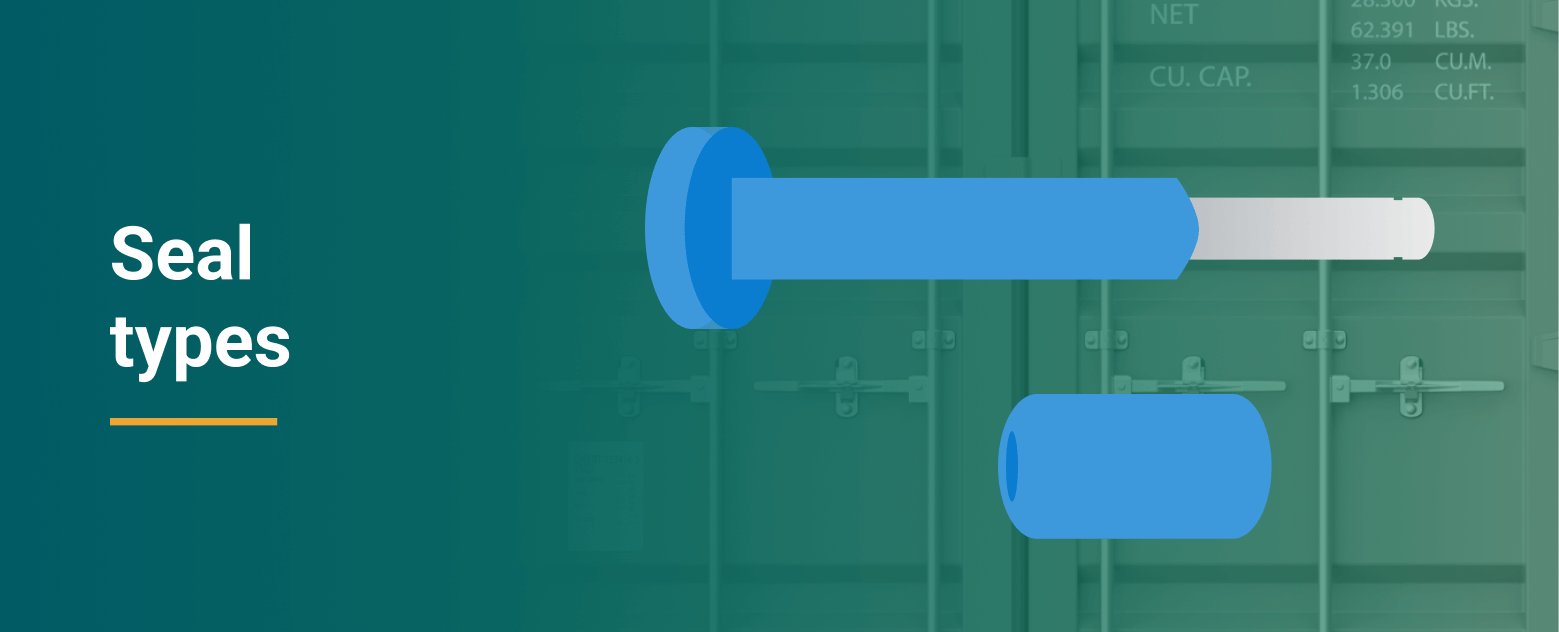
These are sturdier than plastic seals, so – you guessed it – they’re harder to break. Bolt seals are made of metal (usually steel) with a plastic casing. You need a bolt cutter to break open a bolt seal. Because they’re made of metal, these seals are strong and provide excellent security for your boxes.
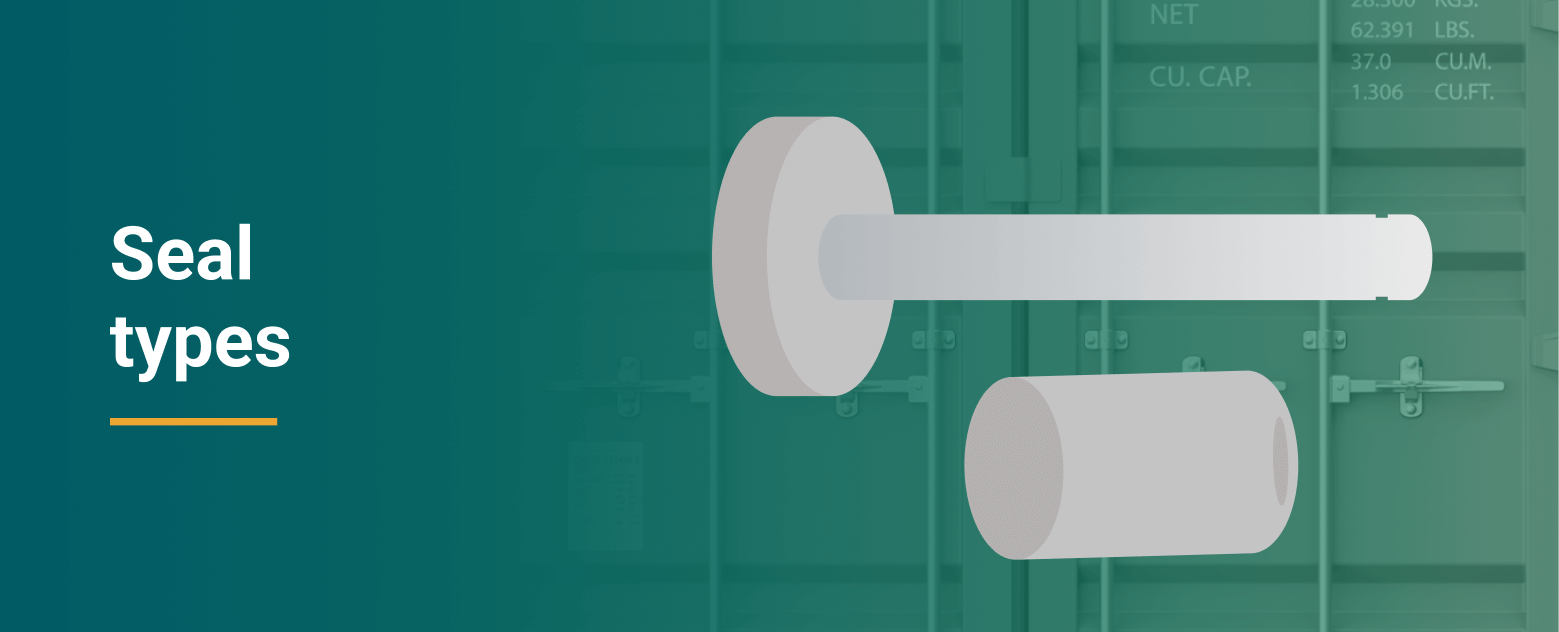
The e-seal
An e-seal looks just like a bolt seal, but with the added benefit of RFID (Radio Frequency Identification) technology. It has a unique ID that can be scanned through a mobile reader. This seal speeds up the customs clearance process, because it can be verified automatically. Now isn’t that convenient?
The cable seal
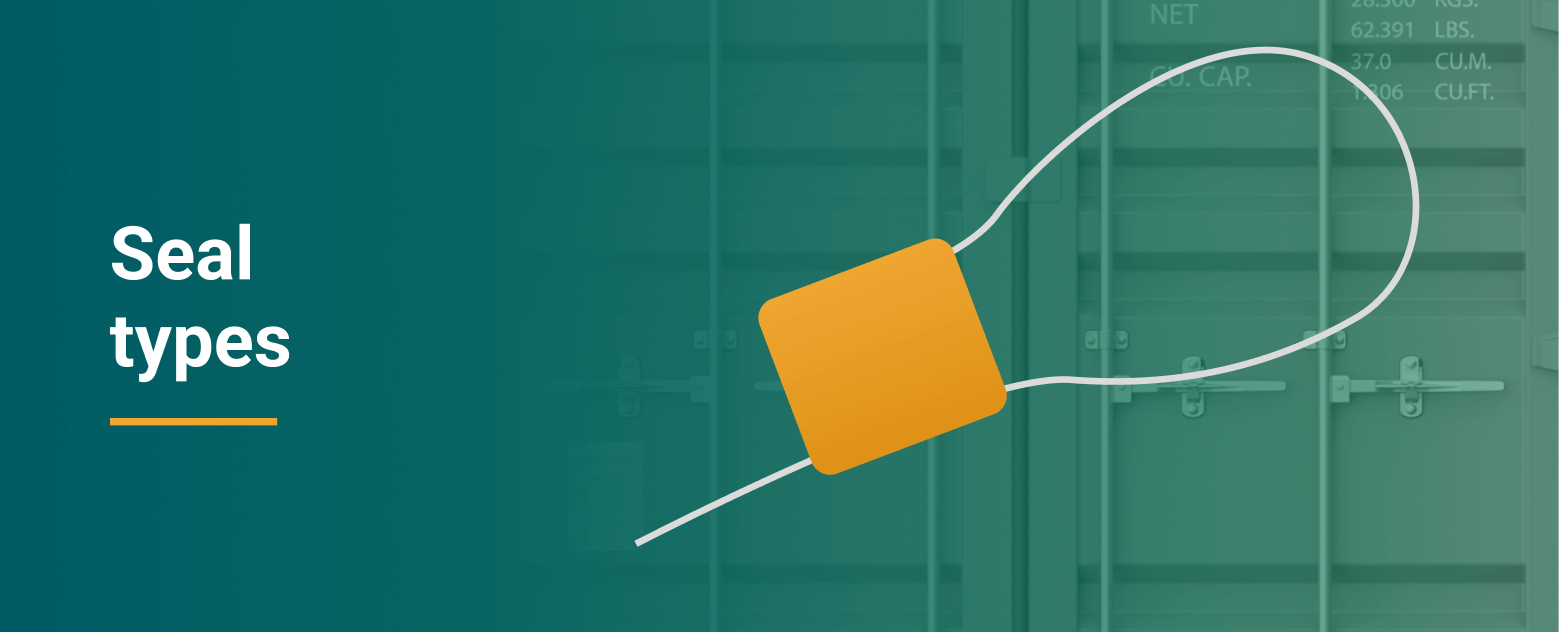
These seals have a steel cable and are self-locking. Cable seals are heavy-duty and, like bolt seals, can only be opened with a bolt cutter. They’re flexible and last longer than other seal types, even in unfavorable weather conditions. Cable seals are the most popular container seals in the shipping industry.
The metal strip seal
These seals have a ball-shaped end and are self-locking. They’re made of metal that’s highly resistant to corrosion and damage. Metal seals can endure long journeys in all types of weather conditions, and are used to secure a variety of container types.
Placing a container seal correctly: How and where to place it
A standard container has two doors, each with a lock rod for security. The lock rods have handles with holes through which a seal is attached to the container door.
The left door of the container is generally closed first, followed by the right door. So, you’re going to want to put the seal around any lock rod on the right door.
Fixing a container seal
A bolt seal is made up of two parts:
- The bolt
- The barrel (both with the same unique ID)
To place the seal correctly, start by snapping the two pieces apart. Slide the seal through the hole in the lock rod, and close it with the barrel cap. You’ll hear a faint ‘click’ sound as the bolt fixes itself into the barrel.
Check the lock again by trying to pull apart the two pieces. Once it’s locked firmly, you can only open it again with a bolt cutter. Self-locking cables and metal seals are locked in the same way.
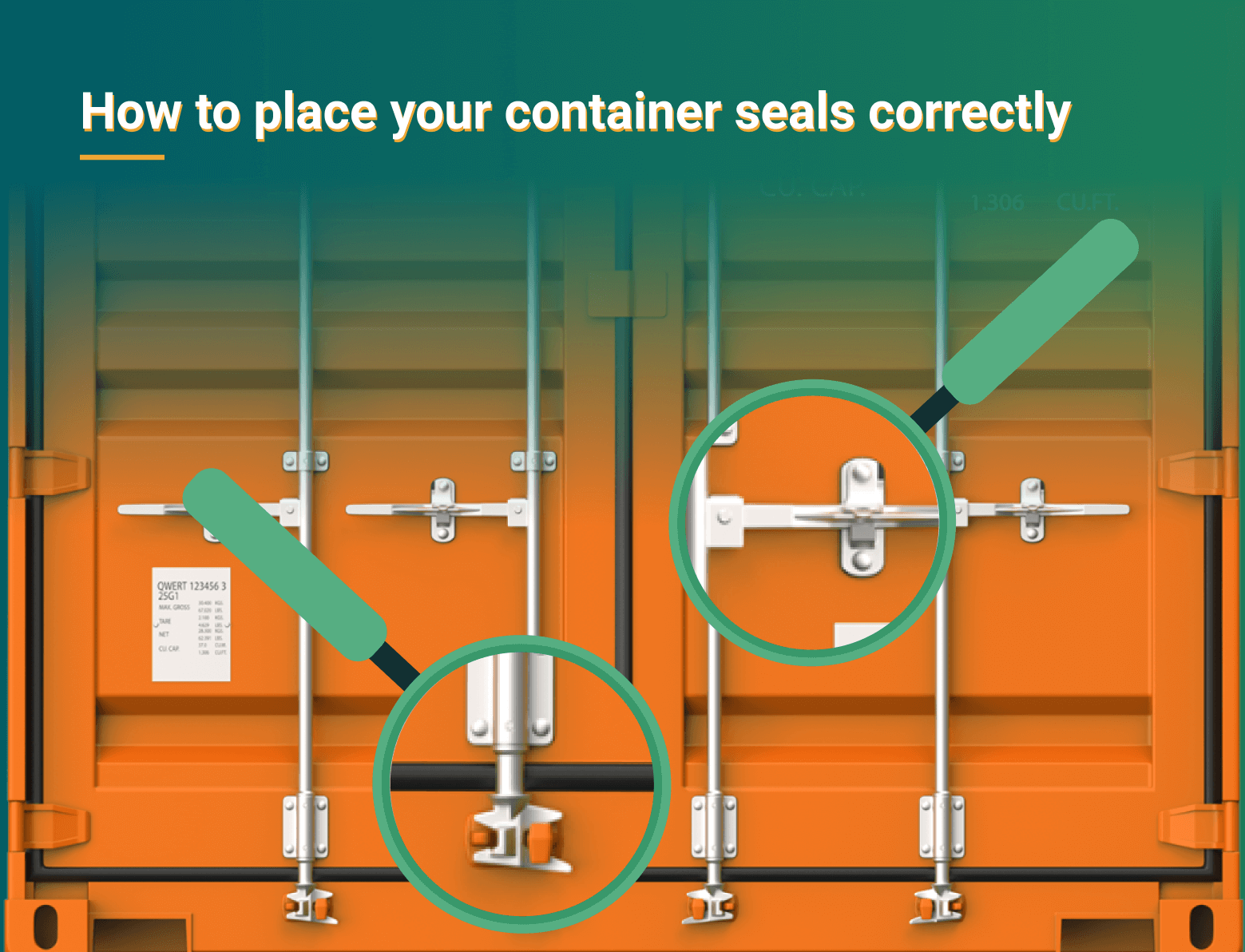
Container seal standards
Container seals are standardized by ISO 17712, which is recognized worldwide. These standards include the following regulations:
- A container seal must be a single-use device that is easy to inspect.
- Each seal must be unique, difficult to copy, and be marked with basic information, such as the logo of the company and a unique identification number.
- Security bolt seals must be at least 18 mm in diameter.
- The tensile strength of a container seal must be greater than 1000 kg.
- The cutting strength of a container seal must be greater than 340 kg.
Port and customs requirements for container seals
You must have at least one seal per shipping container, in order to pass through customs. As the shipper, you’re free to add more seals if you want your box to be extra secure.
The maximum number of seals you may have on your container is 6. This is because there are only 6 door lock holes on each box.
The customs department can pick your container for a random inspection at any time. During an inspection, your seal is broken, so that your container and it’s contents can be checked. Once the inspection is finished, a customs seal will be placed on your box to keep your goods safe. If you see a customs seal, you know that your box has been checked by customs, and has not been tampered with – so don’t panic!
What is a customs container seal?
A customs container seal, commonly known as a customs seal, is a specific type of security seal applied to shipping containers to indicate that the container has been officially inspected and cleared by customs authorities. These seals are a critical component of international trade and shipping, helping to ensure the security and integrity of cargo during transit across borders.
Here are some key features and functions of a customs container seal:
Official Inspection Indicator: Customs container seals serve as an official indicator that customs authorities have inspected the container and verified its contents.
Regulatory Compliance: The presence of a customs seal on a container helps demonstrate compliance with customs regulations and facilitates the smooth movement of goods across borders.
Unique Identification: Customs seals typically have unique identification numbers or codes. This allows customs authorities to track and verify containers easily. The identification information is often recorded in shipping documentsWhat are shipping documents? In shipping, shipping documents are documents that provide information about the goods being shipped. They may include information such as the origin and destination of th... More and may be cross-referenced during inspections.
Tamper Evidence: Customs seals are designed to be tamper-evident. Any attempt to break or tamper with the seal should be immediately noticeable. This feature helps prevent unauthorized access to the container during transit.
Now that you’re up to speed on the customs container seal, let’s get into how you can apply and remove them as safely and accurately as possible:
How to seal a container
Sealing a container with a container seal typically involves using a device or mechanism to secure the container in a way that prevents unauthorized access or tampering. Here are general steps on how to seal a container using a container seal:
| Choose the Right Seal | Select a container seal that meets the security requirements of your shipment. |
| Inspect the Container | Before sealing the container, inspect it for any signs of damage or tampering. Ensure that the container is in good condition and that the doors and access points are secure. |
| Prepare the Seal | If your seal requires assembly, follow the manufacturer’s instructions to prepare the seal for use. For example, if it’s a bolt seal, insert the bolt through the locking mechanism. |
| Place the Seal | Position the seal over the points where the container doors meet or any other designated sealing points. |
| Secure the Seal | Use the provided tools or mechanisms to secure the seal. |
| Record Seal Information | Keep a record of the seal number and any other relevant information. This is crucial for tracking and verifying the integrity of the shipment. |
| Document the Sealing Process | It’s often a good practice to document the sealing process, especially if it involves a chain of custody. |
| Verify Seal Integrity | After sealing the container, visually inspect the seal to ensure it is securely in place. Verify that the seal has not been tampered with and that it shows no signs of damage. |
Note: Specific steps may vary based on the type of container seal you are using, so it’s essential to refer to the manufacturer’s instructions for the seal model you have.
Removing a container seal correctly
To remove a container seal successfully, it needs to be cut with a bolt cutter along the length of the pin. Depending on the strength of the seal, it might take you a few tries to cut through it.
When removing a container seal, take note of the following:
- Before removing the seal, check it for wear and tear, or signs of damage.
- The seal number should match the bill of lading number and other shipping documentsWhat are shipping documents? In shipping, shipping documents are documents that provide information about the goods being shipped. They may include information such as the origin and destination of th... More. If there’s evidence of tampering, the seal should only be opened once the shipping line and insurance representatives are present.
- If you see a customs seal on your container, you know that it’s been opened by customs representatives at the port.
Get quality containers and container seals on xChange
Now that you know all about container seals, it’s time to get yourself some good quality boxes, with strong, sturdy container seals.
xChange connects you with more than 1000 vetted logistics partners in 2500+ locations worldwide. We’re a neutral, transparent marketplace for buying, selling and leasing shipping containers.
It’s never been easier to find and buy the perfect boxes for your needs. Once you’re a member on xChange, it’s simple to get started. All you need to do is type in the container type you’re after, as well as your location, and press ‘search’. You’ll have access to hundreds of containers in your area, available at competitive prices.
Every aspect of your workflow process can be managed on our platform, from searching and striking a deal, to payments, invoices and container tracking. And what’s more, all negotiations can be done directly with your partners, no middle men, no hidden fees!
Find top notch containers with reliable seals today. Click below for a free demo of xChange’s global container marketplace.
How do you use a container seal?
A container seal is used by securing it around the door locks. It can only be unlocked once by the recipient. Often, a bolt cutter must be used to open a container seal. Once a container seal has been opened, it can't be reused, and must be disposed of
How do you seal a container?
You seal a container by sliding it through the holes in the lock rod handles on the door. The seal is locked either with a barrel, or has a self-locking system. The seal can only be opened again once.
What happens if a container seal is broken?
If a container seal is broken, this acts as proof that the goods inside have been tampered with. If your box arrives with an open seal, you should immediately contact the shipping line and their insurance company to claim compensation for loss or damages.
Why do containers get a plastic seal?
Containers get a plastic seal to protect them against tampering or theft. This also ensures that goods are protected from external weather conditions, and acts as proof that the shipment is safe inside the container.


